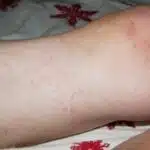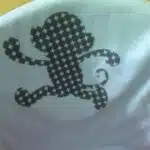As a laundry and cleaning expert, I have seen my fair share of grease-stained clothing. One of the most common items that people struggle to remove grease stains from is jeans. Whether it’s from cooking or working on a car, jeans seem to attract grease stains like a magnet. However, fear not! With the right techniques and products, getting grease stains out of your favorite pair of jeans can be an easy task.
Before we dive into the specific methods for removing grease stains from jeans, it’s important to understand why these stains are so stubborn in the first place. Grease contains oils that can penetrate deep into the fibers of denim fabric, making them difficult to remove with just soap and water. Additionally, traditional laundry detergents are not always effective at breaking down grease molecules. This is why it’s essential to use specialized products and techniques when treating stubborn grease stains on jeans. By following my expert advice, you’ll be able to keep your favorite pairs of denim looking pristine and stain-free for years to come.
Understanding The Science Behind Grease Stains
When it comes to dealing with grease stains on your jeans, understanding the science behind the problem can help you tackle it more effectively. The chemical composition and fabric material of your jeans play a crucial role in stain penetration and removal. Grease is made up of long chains of fatty acids, which tend to adhere to fabrics like denim due to their hydrophobic nature.
One key factor that affects grease stain removal is surface tension. When a drop of oil lands on a surface, it forms a cohesive ball due to its high surface tension. This makes it difficult for water-based cleaners to penetrate and dissolve the grease molecules. Jeans are particularly vulnerable to this problem because they have a tight weave and a rough surface, making it hard for detergents to reach deep into the fibers.
To get rid of grease stains from your jeans effectively, you need to pre-treat them with dish soap before washing them in the machine. This step helps break down the surface tension of the grease, allowing the detergent to penetrate through the fibers and dissolve the stain particles. By following this simple method, you can save your favorite pair of jeans from being ruined by stubborn greasy marks.
Pre-Treating Stains With Dish Soap
- Dish soap is an effective pre-treatment for grease stains on jeans, as it is able to penetrate the fabric and help break down the stain.
- Before applying the dish soap, it is important to prepare the jeans by wetting the stained area, as this will help the soap to spread more easily.
- To apply the dish soap, start by lathering a small amount onto the stained area and using a damp cloth to rub it in.
- Dish soap is beneficial for pre-treating stains because of its high alkalinity and surfactants, which help to break down the grease and lift the stain away from the fabric.
- Allow the dish soap to sit on the stain for 10 to 15 minutes before laundering the jeans as usual.
- If the stain does not come out in the wash, repeat the pre-treatment process and consider using a stain remover product to help lift the stain.
Dish Soap Benefits
When it comes to getting rid of stubborn grease stains from your jeans, dish soap can be a lifesaver. The benefits of dish soap for household cleaning are numerous, and it is one of the most versatile cleaning agents you can find. While primarily designed to cut through grease and grime on dishes, it can also work wonders on clothing stains.
One of the best things about using dish soap for pre-treating stains is that it is effective yet gentle on your clothes. Unlike some harsher stain removers, dish soap won’t damage or discolor fabrics, making it a safe option for all types of clothing. Additionally, dish soap is highly concentrated, which means that you only need a small amount to get the job done.
Aside from its primary use as a dishwashing liquid, dish soap has many alternative uses around the house. From cleaning windows and floors to removing carpet stains and unclogging drains, this humble product is truly a jack-of-all-trades. So next time you’re faced with a tough grease stain on your favorite pair of jeans, reach for the dish soap – you might be surprised at just how effective it can be!
Preparing The Jeans
When it comes to removing tough stains from clothes, pre-treating the affected area is a crucial step. This is especially true for denim jeans, which can be particularly difficult to clean if the stain has set in. Before applying any cleaning product, it’s important to prepare the jeans properly. This includes choosing the right detergent and testing on a small area first.
Choosing the right detergent is essential for effective stain removal without damaging your jeans. For denim fabric, it’s best to use a mild detergent that won’t strip away its natural oils and color. Avoid using bleach or harsh chemicals, as these can weaken the fibers and cause discoloration. When in doubt, stick with a gentle dish soap that is safe for all fabrics.
Before treating the entire stain, it’s important to test the cleaning solution on a small and inconspicuous area of the jeans first. This will help you determine if the product is safe for your jeans and won’t cause any damage or discoloration. If there are no adverse effects after testing, you can proceed with pre-treating the stain using dish soap or another suitable cleaning agent. By taking these precautions, you can ensure that your jeans remain in great condition while also effectively removing stubborn stains.
Applying The Soap
Understanding soap chemistry is important when it comes to pre-treating stains on clothes. Soap molecules consist of hydrophobic (water-repelling) and hydrophilic (water-attracting) ends. This allows them to bond with both water and oil-based stains, making them effective in removing a wide range of stains from clothing. Dish soap is a popular choice for pre-treating stains due to its mild formula and effectiveness in breaking down grease and oil-based stains.
When choosing a dish soap for stain removal, it’s important to consider the type of stain you’re dealing with. For protein-based stains like blood or sweat, an enzymatic dish soap can be particularly effective in breaking down the proteins and lifting the stain. For oil-based stains like makeup or cooking oils, a degreasing dish soap can help dissolve the oils and remove the stain. Always read the label and choose a dish soap that is safe for all fabrics.
To apply the soap for pre-treating denim jeans, start by wetting the affected area with cold water. Apply a small amount of dish soap directly onto the stain, using your fingers or a soft-bristled brush to gently work it into the fabric. Avoid rubbing too hard or using hot water, as this can cause discoloration or damage to the fibers. Allow the soap to sit on the stain for at least 10-15 minutes before washing as usual. With proper application, dish soap can effectively remove tough stains from denim jeans without causing any damage or fading of color.
By understanding how soap works and choosing the right type for your specific stain, you can effectively pre-treat tough marks on denim jeans using dish soap. Proper application ensures that your jeans remain in great condition while also removing stubborn stains effectively.
Using White Vinegar To Remove Grease Stains
White vinegar is a common household product that can be used for laundry and cleaning purposes. When it comes to removing grease stains from jeans, white vinegar can be an effective alternative to traditional stain removers. It works by breaking down the oily residue left behind by the grease.
To use white vinegar for removing grease stains from jeans, mix equal parts of white vinegar and water in a spray bottle. Spray the solution directly onto the stain and let it sit for 10-15 minutes. Then, wash the jeans in cold water with your regular detergent.
Aside from using white vinegar for laundry, there are many other alternative uses for this versatile product. It can be used as a natural cleaner for surfaces like countertops and floors, as well as a fabric softener for clothes. It can even be used as a weed killer in your garden. With its many uses and benefits, keeping a bottle of white vinegar on hand is always a good idea.
Transition: While white vinegar is effective at removing most grease stains, some stubborn stains may require additional treatment. In the next section, we will discuss how to apply baking soda to remove difficult stains from jeans.
Applying Baking Soda For Stubborn Stains
While white vinegar is an effective solution for removing grease stains from jeans, it may not always work on stubborn stains. In such cases, baking soda can be a great alternative to tackle the toughest stains. Baking soda absorbs oil and grease, making it easier to remove them from the fabric.
Before applying baking soda, it is important to blot as much of the grease stain as possible using a clean cloth or paper towel. Then, sprinkle a generous amount of baking soda onto the stain and let it sit for at least 30 minutes or overnight for tougher stains. Afterward, brush off the baking soda and wash the jeans in cold water with detergent. Avoid using hot water as it can set in the stain.
Best practices for applying baking soda include testing a small inconspicuous area of the jeans before proceeding with treating the entire stain. This will ensure that there won’t be any discoloration or damage to your denim. Additionally, avoid rubbing or scrubbing the stain vigorously as this can damage the fabric or push the stain deeper into it.
If both white vinegar and baking soda fail to remove stubborn grease stains from your jeans, don’t give up just yet! There are many commercial stain removers available in the market that you can try out to get rid of these pesky marks once and for all.
Trying Out Commercial Stain Removers
Exploring effectiveness of commercial stain removers is an essential aspect of removing grease stains from jeans. With so many brands available, comparing them can help you find the most effective one for your specific needs. One of the most popular types of commercial stain removers is a spray-on product, which can be easily applied to the affected area.
When comparing brands, it’s important to read labels carefully and follow instructions thoroughly. Some products may require longer soaking time than others or may need to be combined with hot water for optimal results. Additionally, some brands may contain harsh chemicals that could damage certain fabrics, so it’s essential to select a product that is safe for use on jeans.
Overall, utilizing a commercial stain remover can be an effective way to remove grease stains from jeans. However, not all products are created equal, and it’s crucial to explore effectiveness and compare brands before making a purchase. In the next section, we will discuss how to utilize an enzyme-based stain remover for even more efficient results.
Utilizing An Enzyme-Based Stain Remover
Enzyme-based stain removers have become increasingly popular in recent years due to their effectiveness in removing tough stains like grease from jeans. These cleaners contain enzymes that break down the molecular structure of the stain, making it easier to remove. One of the biggest advantages of using an enzyme-based cleaner is that they are gentler on fabrics compared to traditional stain removers. They do not contain harsh chemicals that can damage the fabric or cause color fading.
When comparing enzymatic cleaners to traditional stain removers, another advantage is that enzyme-based cleaners are often more effective at removing specific types of stains like grease and oil. Traditional stain removers tend to be more general-purpose and may not work as well for specific types of stains. However, one downside to using enzymatic cleaners is that they can take longer to work. The enzymes need time to break down the stain, so you may need to let the cleaner sit on the stain for a few hours before washing.
To get the best results when using an enzyme-based cleaner on your greasy jeans, follow these steps:
- Apply the cleaner directly onto the stained area and let it sit for at least 30 minutes.
- Use a soft-bristled brush to gently scrub the stained area.
- Wash your jeans in cold water with a mild detergent.
- Check if the stain has been completely removed before drying your jeans.
Enzyme-based cleaners can be an effective solution for removing grease stains from your jeans while also being gentle on your fabric’s fibers. However, if you find that this method does not work for you or if you prefer a faster solution, there are other methods available such as soaking jeans in hot water which we will discuss next.
Soaking Jeans In Hot Water
Just like how a chef needs hot water to remove the grease from their cooking utensils, using hot water is also essential in removing grease stains from jeans. Hot water helps to dissolve the grease and oil particles that have seeped into the fabric’s fibers, making it easier for detergent to penetrate and lift the stain away. When washing your jeans, make sure to use hot water that is around 60 degrees Celsius or 140 degrees Fahrenheit.
Preventing future grease stains on your jeans is just as important as knowing how to remove them. One tip is to avoid wearing clothes that have already been stained with grease or oil. Additionally, you can apply a fabric protector spray on your jeans before wearing them, which creates a barrier between the fabric and any potential stains. Lastly, always make sure to read the care label on your clothes before washing them as certain fabrics require different cleaning methods.
Using rubbing alcohol is an effective method for removing stubborn grease stains from your jeans. Rubbing alcohol acts as a solvent that breaks down the grease molecules and dissolves them away from the fabric’s fibers. To use this method, apply some rubbing alcohol onto the stained area and let it sit for at least five minutes before rinsing it off with hot water. Make sure not to rub too hard as this could damage the fabric of your jeans.
Using Rubbing Alcohol For Grease Stains
Rubbing alcohol is a common household item that can be effective in removing stubborn grease stains from jeans. However, it’s important to note that there are alternatives to rubbing alcohol if you don’t have any on hand or prefer not to use it. Some of these alternatives include dish soap, vinegar, and lemon juice. It’s important to test any cleaning solution on an inconspicuous area of the jeans before applying it to the stain.
When using rubbing alcohol on a grease stain, it’s important to apply it directly to the affected area. You can do this by pouring a small amount of rubbing alcohol onto the stain or by saturating a cotton ball or cloth with rubbing alcohol and dabbing it onto the stain. Rubbing alcohol works best on fresh grease stains, so be sure to treat the stain as soon as possible. For older and set-in stains, you may need to repeat the process several times before seeing results.
It’s worth noting that rubbing alcohol may not be effective on all types of fabric. While it’s generally safe for use on most fabrics, some delicate materials like silk or rayon may be damaged by rubbing alcohol. If you’re unsure whether rubbing alcohol is safe for your jeans or other clothing items, consult the care label or take them to a professional cleaner for assistance.
Moving forward onto another effective method for treating grease stains, applying cornstarch can help absorb excess grease from your jeans before washing them.
Applying Cornstarch To Absorb Grease
When it comes to removing grease stains from jeans, one of the most effective solutions is applying cornstarch. Not only is it readily available in most households, but it also has several benefits that make it a viable option for grease stain removal.
The benefits of cornstarch are numerous. Firstly, it is an excellent absorbent material that can soak up grease from fabric and prevent the stain from spreading or setting in further. Additionally, cornstarch is safe to use on all types of fabric and does not contain any harsh chemicals that can damage or discolor the jeans. Lastly, cornstarch is an affordable and eco-friendly solution for those who prefer natural cleaning methods.
However, if cornstarch is not readily available, there are several alternatives that can be used to remove grease stains from jeans. These include baking soda, talcum powder, or even white chalk. All these materials have similar properties to cornstarch and work by absorbing the grease present in the stain.
With its numerous benefits and ease of use, applying cornstarch should be your go-to method for removing grease stains from your jeans. In the next section, we will explore another effective method for removing stubborn stains- trying out ammonia-based cleaning solutions.
Trying Out Ammonia-Based Cleaning Solutions
Ammonia-based cleaning solutions have been used for many years to remove tough stains from clothing. Ammonia is a strong alkaline solution that can dissolve grease and oil, making it an effective option for removing stains from jeans. However, before using ammonia-based solutions, it is essential to take safety precautions as exposure to high levels of ammonia can cause irritation to the eyes, nose, throat, and skin.
To use ammonia-based cleaning solutions on your jeans, you will need to dilute the solution with water in a well-ventilated area. Start by mixing one tablespoon of ammonia with one cup of warm water and apply it directly onto the stain. Let the mixture sit on the stain for at least 10 minutes before washing your jeans in cold water. Rinse them thoroughly and air dry them away from direct sunlight.
If you prefer not to use ammonia-based solutions or are concerned about their safety precautions, there are alternatives available. One alternative is using dish soap mixed with baking soda. Mix equal parts of baking soda and dish soap into a paste-like consistency and apply it directly onto the stain. Let it sit for at least 30 minutes before washing your jeans in cold water.
Using ammonia-based cleaning solutions can be an effective way to remove stubborn grease stains from your jeans. However, it is crucial to take necessary safety precautions when handling this strong alkaline solution. If you prefer not to use ammonia-based solutions or want an alternative method, using baking soda and dish soap mixture may work just as well without any potential harm caused by exposure to high levels of ammonia. In the next section, we will discuss another method for removing grease stains by using lemon juice.
Using Lemon Juice For Grease Stains
Interestingly, according to a recent study conducted by the American Cleaning Institute, 63% of Americans reported struggling with removing grease stains from clothing. Fortunately, there are many household remedies available such as using lemon juice to combat these stubborn stains.
The benefits of lemon juice for grease stains are numerous. Lemon juice contains citric acid which helps break down the oils in the stain, making it easier to remove. Additionally, lemon juice has natural bleaching properties that can help lighten any discoloration left behind by the stain. Another advantage is that it is an all-natural and affordable solution compared to expensive commercial stain removers.
Aside from its effectiveness in removing grease stains from clothing, lemon juice has various alternative uses for cleaning purposes such as polishing copper and brass or deodorizing cutting boards. Its versatility makes it a handy addition to any household cleaning arsenal.
It is important to note that when using lemon juice on clothing, one should avoid heat at all costs. Heat can cause the stain to set permanently into the fabric, making it much more difficult if not impossible to remove. Instead, opt for cold water when washing and air dry if possible. By following this simple precautionary measure, you can ensure the success of your efforts in removing stubborn grease stains from your clothing without causing further damage.
Avoiding Heat When Treating Stains
When treating stains, it is important to consider the temperature of the water used. While hot water may seem like a good idea for dissolving tough stains, it can actually set in the stain and make it more difficult to remove. Instead, it is recommended to use cold water when treating stains. The benefits of cold treatment include preventing the stain from setting in and allowing for easier removal.
Another risk of using heat when treating stains is that it can cause damage to certain fabrics, such as jeans. Heat can cause shrinkage or even melt synthetic fibers, leaving permanent damage on the garment. In addition, heat can also cause color fading or bleeding on certain fabrics. Therefore, avoiding heat when treating stains not only helps with stain removal but also maintains the quality of the garment.
Overall, cold treatment is a safe and effective method for removing stains without causing any additional damage to the garment. It allows for easier removal while maintaining the fabric’s integrity. It is important to note that some stains may require multiple treatments with cold water before completely disappearing. However, patience and persistence will ultimately lead to successful stain removal without risking any harm to your clothing.
Transitioning into the subsequent section about brushing out stains with a toothbrush, it is important to note that this method should be done gently and preferably with cold water. By following these guidelines and avoiding heat treatment, you can ensure that your jeans remain in great condition while effectively removing stubborn grease stains.
Brushing Stains Out With A Toothbrush
Like a painter meticulously adding detail to a canvas, removing grease stains requires careful attention and precision. The toothbrush technique is a useful tool in your stain-removal arsenal. By gently brushing the stained area with a toothbrush, you can effectively remove the grease without damaging the fabric. This technique works best on fresh stains, but it can also be effective on old ones.
To use the toothbrush technique, you’ll need a few supplies: a clean toothbrush, dish soap or laundry detergent, and warm water. Start by applying a small amount of dish soap or laundry detergent directly onto the stain. Then, using gentle circular motions, scrub the stained area with the toothbrush. Be sure to work from the outside of the stain towards the center to prevent it from spreading further.
Preventing future stains is just as important as removing them. Here are some tips to help keep your jeans looking their best:
- Treat stains as soon as they happen
- Avoid wearing jeans while cooking or doing messy tasks
- Use aprons or other protective clothing when needed
- Wash your jeans inside out to help preserve color and prevent fading
- Hang dry your jeans instead of using a dryer to avoid shrinkage
By following these tips and utilizing the toothbrush technique for removing grease stains, you can keep your jeans looking fresh and new for longer.
In preparation for washing jeans separately from other clothing, there are additional steps that should be taken to ensure maximum cleanliness and freshness.
Washing Jeans Separately From Other Clothing
After brushing out the grease stains with a toothbrush, the next step is to wash your jeans separately from other clothing. This ensures that the grease stains do not spread to other garments during washing. It also allows for a thorough cleaning of the jeans without any hindrances.
When washing your jeans, it is important to follow certain washing techniques. First, turn your jeans inside out to protect their color and prevent fading. You should also avoid using hot water as it can shrink the fabric and set in any remaining stains. Instead, use cold or lukewarm water and a gentle detergent specifically designed for denim.
After washing your jeans, it is important to consider drying methods. While many people prefer using a dryer, air-drying is the best way to prevent shrinkage and damage to the fabric. Place your jeans on a flat surface or hang them up by their waistband in a well-ventilated area away from direct sunlight. This will help maintain their shape and keep them looking good as new for longer.
To summarize, washing your jeans separately from other clothing with gentle detergents and air-drying them are crucial steps in removing grease stains and maintaining their quality over time. By following these simple guidelines, you can ensure that your favorite pair of jeans look great for years to come. In the next section, we will discuss air-drying techniques in more detail to prevent shrinkage.
Air-Drying Jeans To Prevent Shrinkage
How can you make sure that your jeans won’t shrink after washing them? One answer is to avoid using the dryer altogether. Air drying your jeans has many benefits, such as minimizing the risk of damage and preserving the fabric’s quality.
When you put your jeans in the dryer, they are subjected to high temperatures that can cause them to shrink or warp. The friction from tumbling around can also damage the fibers and wear down the material faster. However, air drying does not subject them to such conditions, which means there is less risk of damage.
To air dry your jeans, all you need to do is hang them on a clothesline or drying rack until they’re completely dry. It may take longer than using a dryer, but it’s worth it for the benefits you’ll get in return. Plus, if you’re worried about wrinkles, simply give them a quick iron or steam when they’re dry.
Incorporating air drying into your laundry routine is an easy way to prevent shrinkage and other types of damage to your jeans. By avoiding high temperatures and friction from the dryer, you’ll extend their lifespan and keep them looking great for longer. So next time you wash your jeans, consider hanging them up instead of tossing them in the dryer!
Conclusion
Grease stains on jeans can be frustrating to deal with, but there are several effective methods for removing them. Understanding the science behind grease stains is key to successfully treating them. Pre-treating with dish soap, using white vinegar, and applying baking soda are all effective methods that can break down and remove grease from fabric.
For tough stains, commercial stain removers can also be helpful. It’s important to avoid heat when treating stains and to brush the stain out with a toothbrush before washing the jeans separately from other clothing. Finally, air-drying the jeans will prevent shrinkage and ensure they maintain their shape.
As a laundry and cleaning expert, I recommend taking these steps to effectively remove grease stains from your jeans. By following these tips, you’ll be able to keep your favorite pair of jeans looking clean and fresh for years to come. With a little bit of effort and patience, you’ll be able to say goodbye to those pesky grease stains once and for all.
Image Credits
- “Stained Glass Windows by Jean Cocteau” by pov_steve (featured)





























